Queen Elizabeth II — who for seven decades reigned over the United Kingdom as its sovereign and served as matriarch of Britain’s royal family — was honored Monday with a state funeral that attracted world leaders and royals, as well as crowds of thousands to the streets of London to say goodbye to the monarch.
The hourslong proceeding, filled with pomp and circumstance, ended in a solemn, intimate ceremony at St. George’s Chapel at Windsor Castle, where the monarch’s casket was lowered into the Royal Vault before a private burial service.
King Charles III, who ascended to the throne after his mother’s death on Sept. 8, appeared to be holding back tears as the congregation sang “God Save the King,” bringing the committal service to an end.
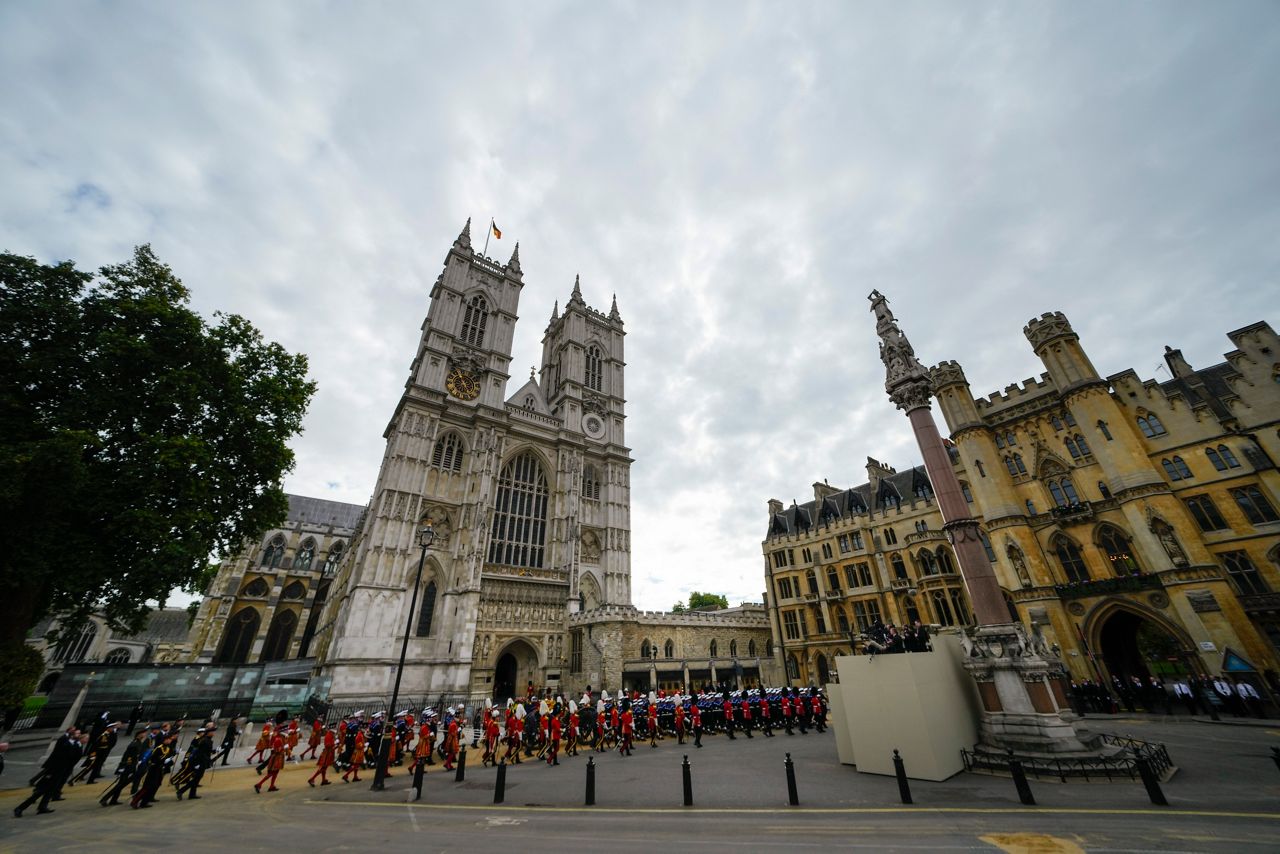
The day began in London, where thousands of onlookers lined the streets to pay their respects. A bell at Westminster Abbey tolled 96 times, once for each year of Queen Elizabeth II’s life. The monarch’s coffin, draped in the royal flag, adorned with her crown and a large display of flowers, was slowly transported by British soldiers in a formal walking procession, with dozens of members of the Royal Navy accompanying it for the short walk from Westminster Hall to Westminster Abbey.
Within the flowers was a handwritten note from the king, which read: “In loving and devoted memory. Charles R” — one of several personal touches amid the pageantry.
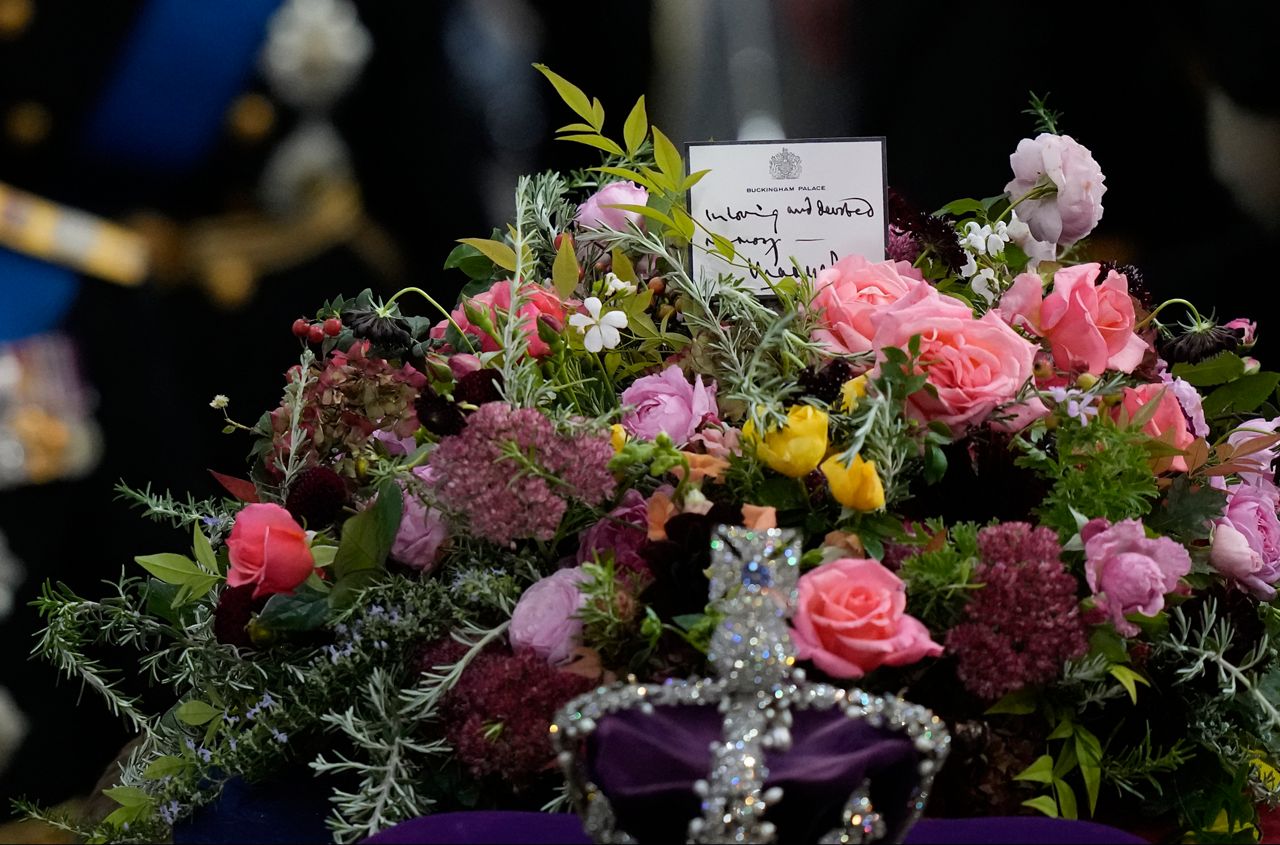
Arriving just before 11 a.m. local time, her coffin was carried inside during a moment of silence, before the abbey’s choir broke out in its first song of the ceremony. Accompanying the coffin was Charles and the queen’s grandsons, William, Princes of Wales, and Harry, Duke of Sussex. Their families, including Kate, Princess of Wales; Prince George; Princess Charlotte; and Meghan, Duchess of Sussex, joined them in the procession.
The service was also attended by world leaders such as U.S. President Joe Biden, French President Emmanuel Macron and Canadian Prime Minister Justin Trudeau.
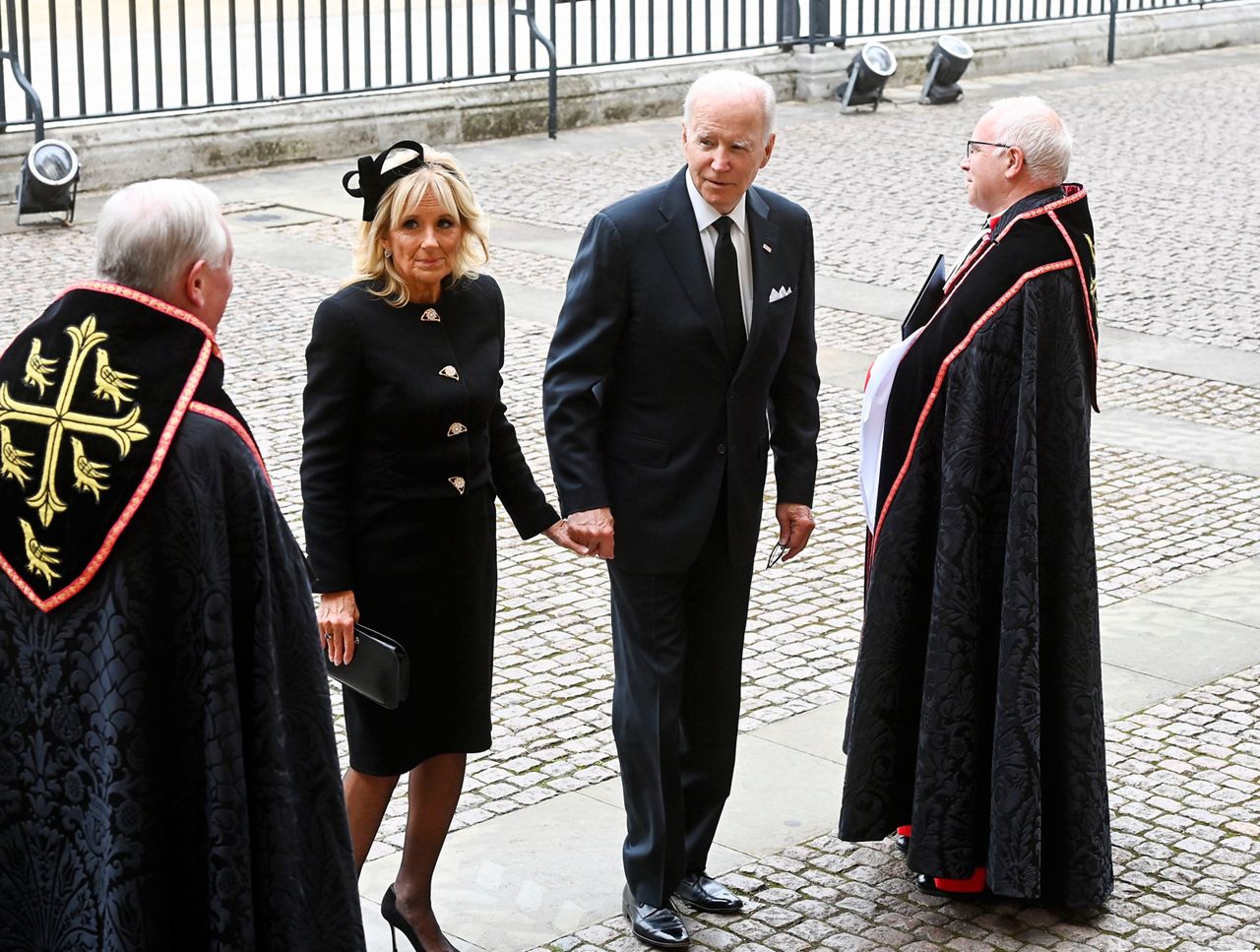
The Very Rev. David Hoyle, dean of Westminster Abbey, opened the service by honoring the queen’s lifetime of service to her people.
“Here where Queen Elizabeth was married and crowned, we gather from across the nation, from the Commonwealth and from the nations of the world to mourn our loss to remember her long life of selfless service and ensure confidence to commit her to the mercy of God, our maker and redeemer,” Hoyle said.
“With gratitude, we remember her unswerving commitment to a high calling over so many years as queen and head of the Commonwealth with admiration,” he continued. “We recall her lifelong sense of duty and dedication to her people. With thanksgiving, we praise God for her constant example of Christian faiths and devotion. With affection, we recall her love for her family and her commitment to the causes she held dear.”
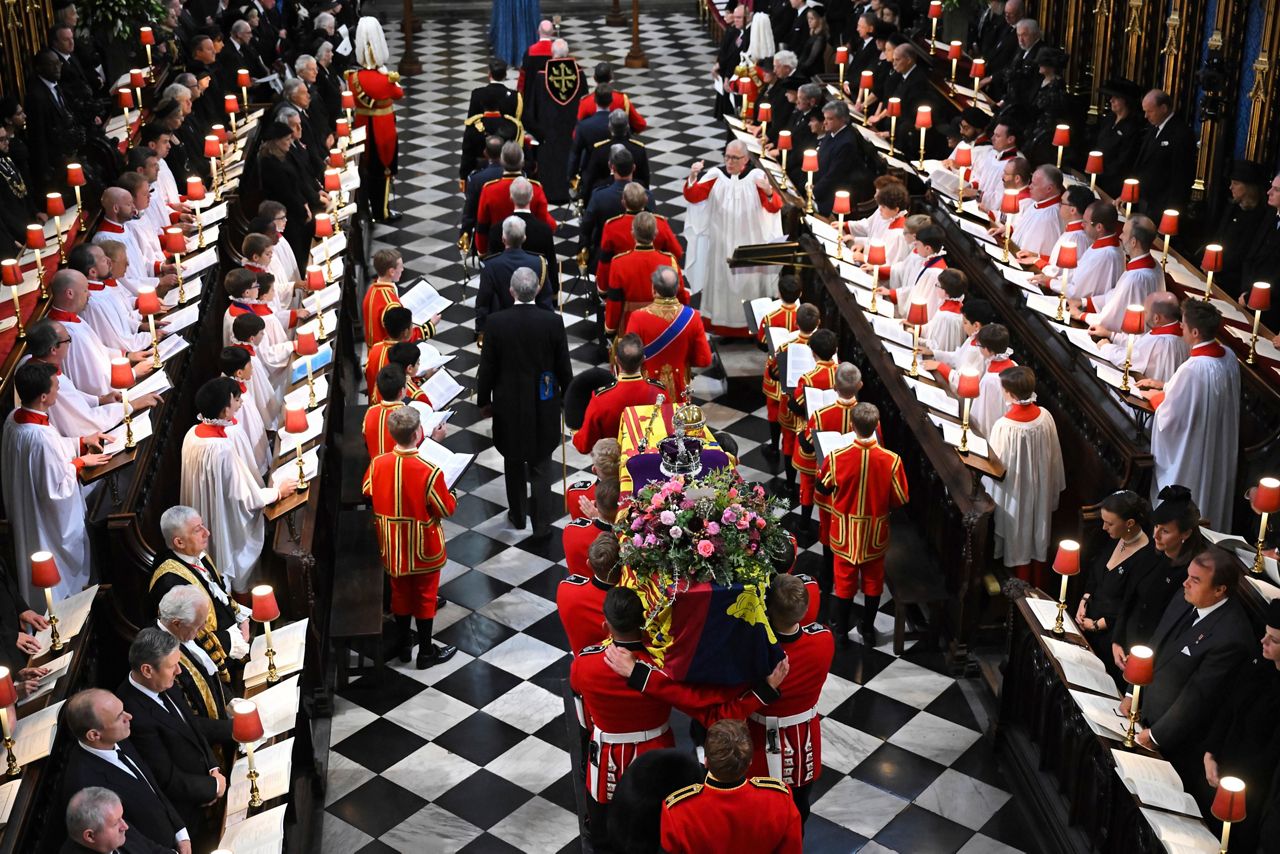
Speakers at the ceremony made reference to major events throughout her long life in the public eye. The Most Rev. Justin Welby, archbishop of Canterbury, recounted Queen Elizabeth’s II 21st birthday address.
He noted that during a radio broadcast on her 21st birthday in 1947, Elizabeth, then still a princess, said she would dedicate her entire life to serving the nation and commonwealth.
“Rarely has such a promise been so well-kept,” Welby said.
After the service concluded, the queen’s coffin was taken in a procession to Wellington Arch — the original entrance to Buckingham Palace — before continuing on to Windsor Castle.

The casket was taken via gun carriage from Westminster Abbey through the heart of London to the historic arch. Charles and the senior royals marched behind the queen’s coffin, with tens of thousands lining the route to witness the queen’s final journey through London.
Upon arrival at the arch, the coffin was transferred to a hearse and began its journey to Windsor, arriving just after 3 p.m. local time.
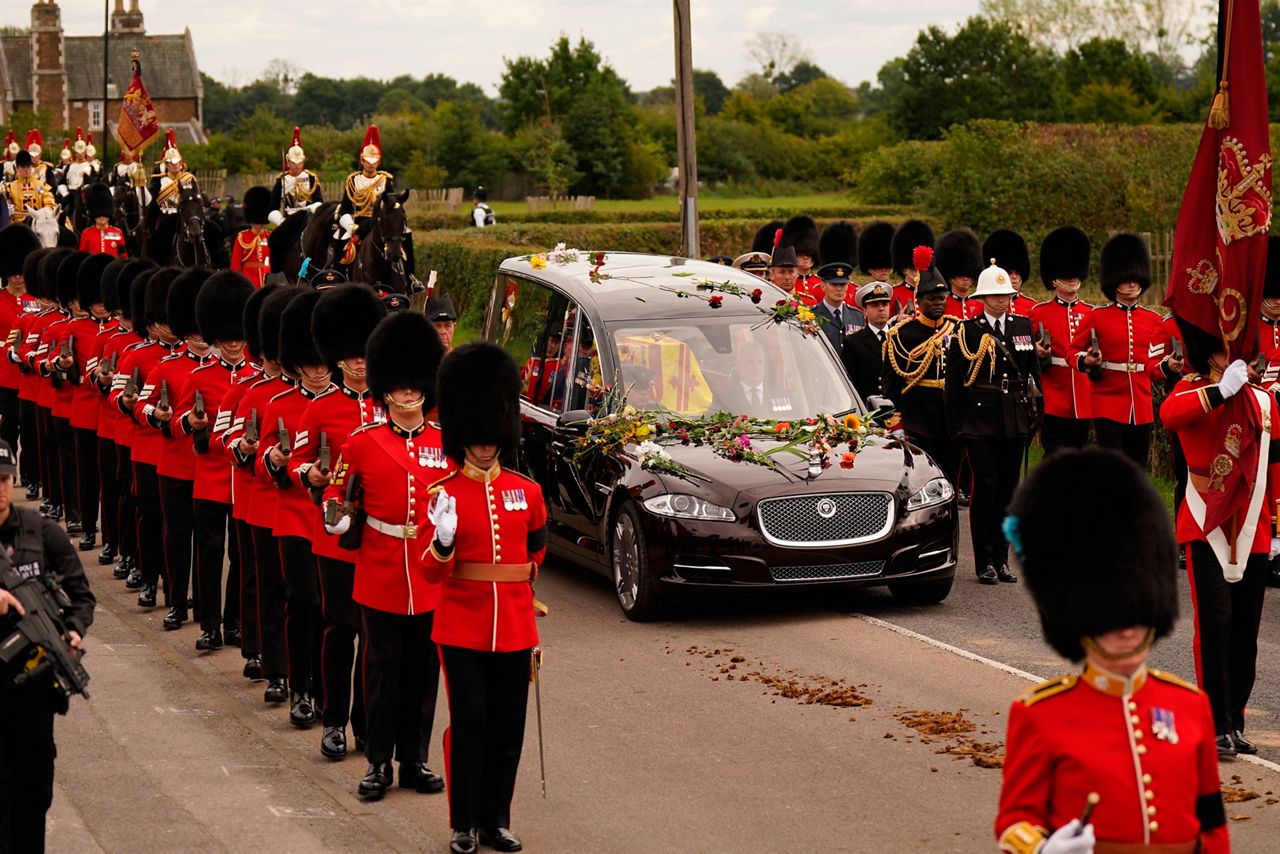
Driven inside the clear-cased hearse, the coffin began its slow journey down the 2.65-mile Long Walk, the lengthy road that approaches Windsor Castle. Her casket was again flanked by members of the Queen's Guard and other British service members before being brought into St. George’s Chapel for the committal service.
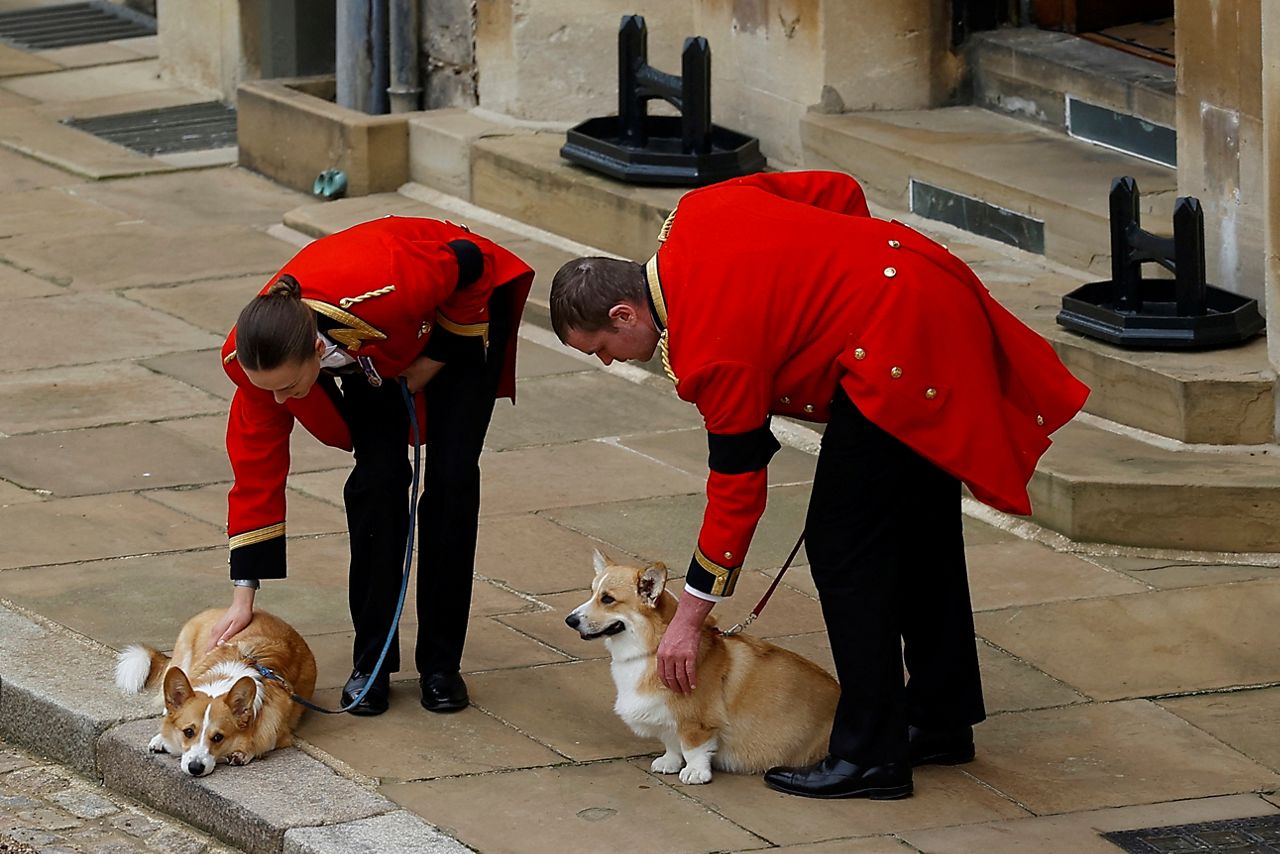
David Conner, the dean of Windsor, opened the service by saying of the queen: “In the midst of our rapidly changing and frequently troubled world, her calm and dignified presence has given us confidence to face the future, as she did, with courage and with hope.”
As the service drew to a close, the congregation watched as the items received by the queen at her coronation in 1953 were removed from atop her coffin and received back by the dean of Windsor.
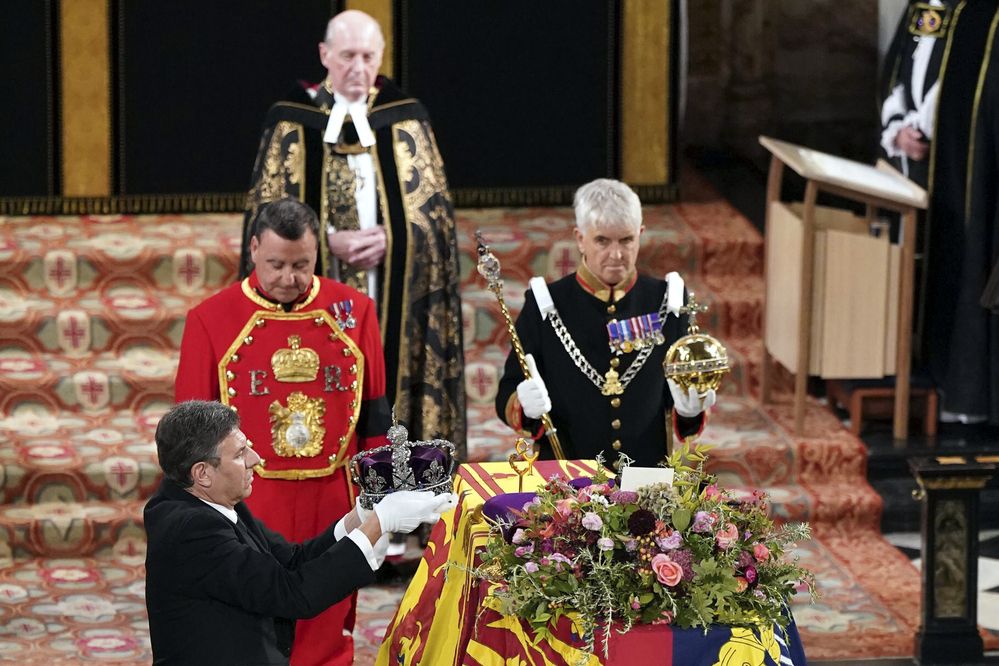
First came the golden scepter, which symbolized kingly power and justice, then the orb, which symbolized the world. Finally the state crown was removed — which the Archbishop of Canterbury placed on the Queen’s head 70 years ago.
The items were placed one by one on the high altar at the chapel.
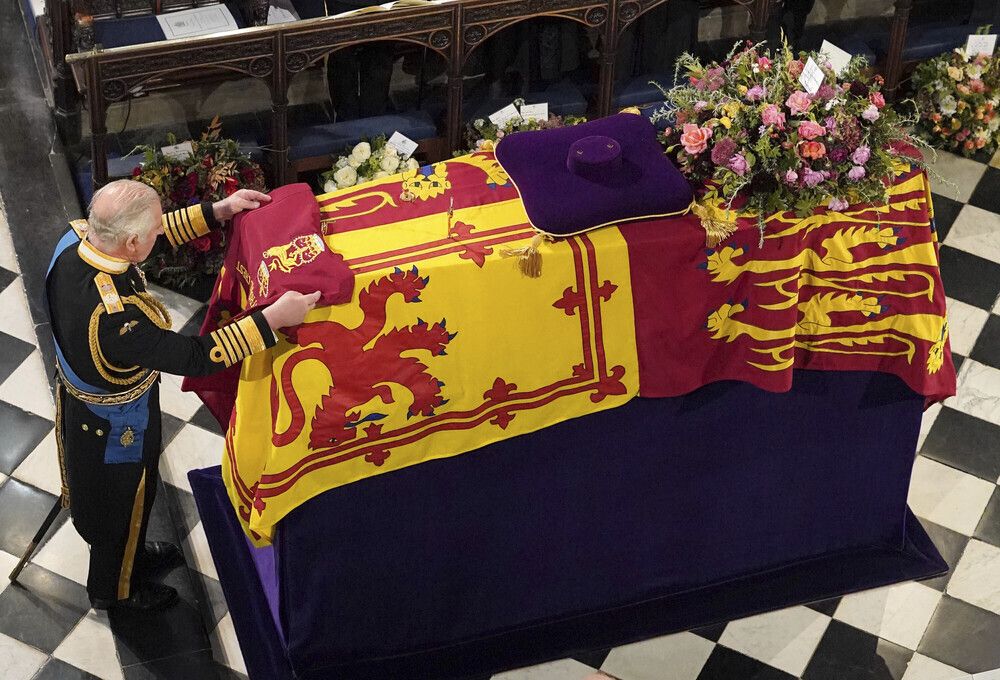
Charles then placed on her coffin the Company Camp Colour, a flag used by the armed forces specific to the queen, which will now officially be retired with her death.
As the queen’s casket was lowered into the vault, the garter king of arms read out the queen’s full styles and titles: “Thus it hath pleased almighty God to take out of this transitory life unto his divine mercy the late most high, most mighty and most excellent monarch, Elizabeth the Second, by the grace of God of the United Kingdom of Great Britain and Northern Ireland and of her other realms and trritories queen, head of the Commonwealth, defender of the faith, and sovereign of the most noble order of the garter.”
The queen’s casket will later be relocated to the King George VI Memorial Chapel, where she was set to join her parents and her husband, Prince Philip, who died last year.
As Elizabeth reached the last stop before her final resting place, the dean of Windsor read the Psalm.
“Go forth upon thy journey from this world, O Christian soul; In the name of God the Father Almighty who created thee; In the name of Jesus Christ who suffered for thee; In the name of the Holy Spirit who strengtheth thee,” he said. “In communion with the blessed saints, and aided by angels and archangels, and all the armies of the heavenly host, may thy portion this day be in peace, and thy dwelling in the heavenly Jerusalem. Amen.”
The queen’s piper then played his final call on the pipes, another element of Elizabeth’s reign that will now retire.
Finally, the congregation joined together to once again sing the national anthem, “God Save the King.”
Charles could be seen standing stoically, with tears in his eyes, the coffin finally out of sight.
The Queen's burial is a private, smaller ceremony taking place Monday evening, with members of the royal family in attendance.
The Associated Press contributed to this report.


